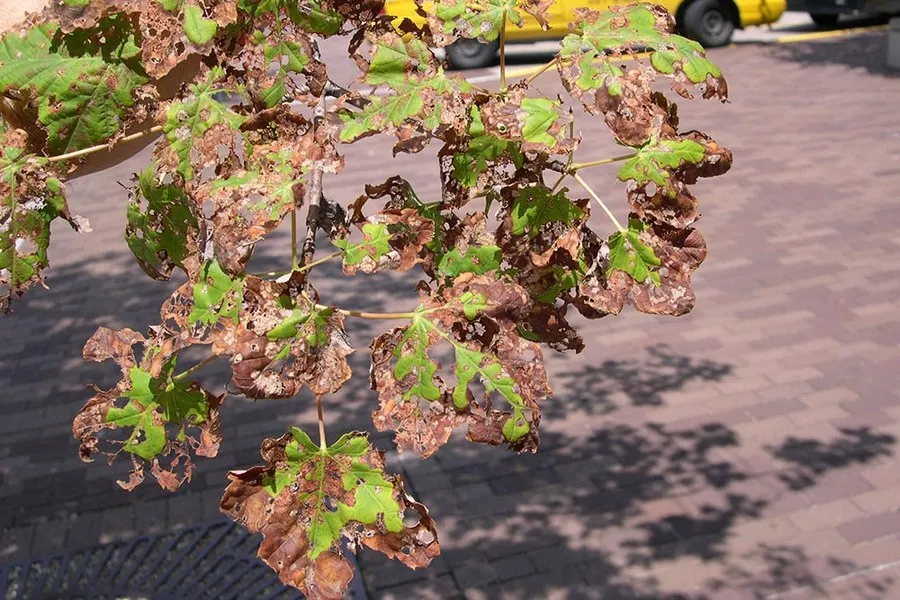Trees, where are they going & why?

No matter the route, when you enter the Borough of New Cumberland, a noticeable canopy of trees is appreciated. However, age, disease, and strong storms to name a few, are taking a toll on our shade trees. What can you do to maintain and increase our shade trees canopy? Plant a tree – the right tree in the right spot is the key to decades of shade, songbirds, energy savings and beauty. Recommendations for the variety of trees to plant can be secured from a reputable arborist or a community forester from the PA Department of Conservation and Natural Resources.
Why are trees disappearing in the Borough and across the region?
This article is the first in a quarterly series looking at factors that contribute to the loss of trees and our tree canopy. Stressful conditions can reduce a tree’s ability to produce energy as well as force the tree to divert energy from growth, flowering, and fruiting to defense. Reducing energy production results in less storage of energy (starch in woody plants) and can exhaust a trees’ defenses. Some stressful conditions are acute and may not last very long like a seasonal drought, while others are more chronic such as compacted soil conditions. It is often when trees are under stress from abiotic (non-living) causes and energy and defenses become limited that biotic stressors like insect pests and disease pathogens are more easily able to establish, exacerbating tree decline and death.
The struggles trees face when growing in many urban or suburban settings can mean the difference between healthy trees that provide shade, boosts property values, and improves air quality or expensive removals. When we think about tree stressors, we often think about insects and diseases that can certainly impact trees, but there are numerous abiotic (non-living) stressors that cause the demise of thousands of urban trees. Those abiotic tree stressors can be grouped into several categories such as environmental factors, site factors, and human activities. The first topic in this quarterly series is environmental stressors.
Environmental Stressors
The first environmental stress that comes to most minds is drought. Water stress may be caused by a lack of rain, or it may be caused by inadequate soil space from which to draw water. Drought is a primary contributing factor to tree decline. environmental stressors like insufficient water are often the primary cause. Even with adequate soil space and precipitation, drought stress can occur from root injuries that short-circuit the tree’s ability to take up water and nutrients that may be available.
Another environmental stress can be a late spring frost or freeze that damage newly emerging leaves. Water expands as it freezes in plant tissues, bursting cell walls. When the tissue thaws again, the ruptured cells die and darken soon after. Tender tissues are prone to such injury in late spring frosts. If leaves are damaged in the spring, the tree will need to dip into reserve (or stored) energy to create new leaves needed for photosynthesis that growing season.
Extreme heat can be a major stress on some species of trees, causing moisture loss, leaf scorch, and premature leaf drop. In many cases, heat stress includes a component of drought stress, as the tree moves more water via evapotranspiration to combat the effects of heat, often exceeding the available water in the ground. This stressor can be exacerbated by site conditions found in parking lots or downtown streetscapes with limited soil space and lots of reflected heat.
Snow and ice loading during the winter can cause major limb breakage, which results in a reduction in a tree’s canopy. That lost leafy canopy reduces the trees ability to produce energy for itself, leading to stress on the tree. Ice can increase the weight of a branch by 30 times or greater, depending on the thickness of the ice, making it more susceptible to breakage. This content was adapted from a Penn State Extension article.



 (717) 774-0404
(717) 774-0404 1120 Market Street, New Cumberland, PA
1120 Market Street, New Cumberland, PA 8:30 a.m. - 4:30 p.m. Mon - Fri
8:30 a.m. - 4:30 p.m. Mon - Fri